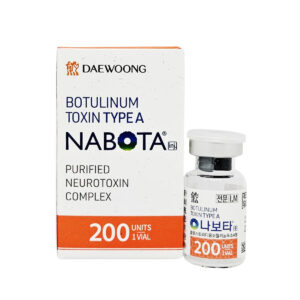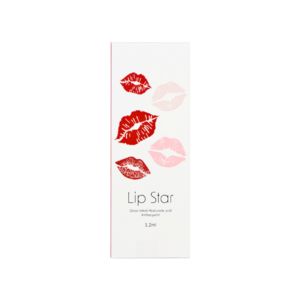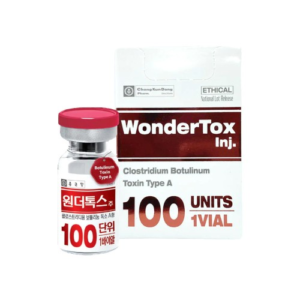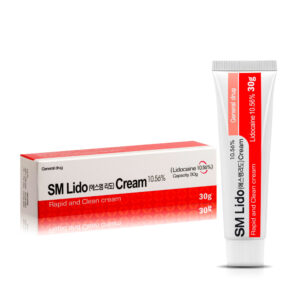No products in the cart.
Need help? Write to us support@fillersfairy.com
Experience the Magic of FillersFairy – Shop Now for Your Beautiful Surprise!
- DERMAL FILLER
- BODY FILLER
- SKIN BOOSTER
- NCTF 135HA
- DIVA EYE PN
- DIVA FACE PN
- AMI NAD+
- NadReju
- Miracle Touch BR
- Miracle Touch Up
- Regenovue Aqua Shine Plus
- Vitaran i
- Vitaran i 2
- Hyalace
- Elaxen PN
- PuriColl
- Rejeunesse Sparkle
- ASCE+ IRLV
- AestheFill
- AETER PURI EYES
- Ami Eyes
- Aqua Exosome
- ASCE Plus SRLV
- Celosome Aqua
- Curenex Glow
- Cytocare
- Exo-one
- High Inj
- Hyaron
- Juvederm Skinvive
- Kiara Reju
- Lapuroon
- Miracle
- Puri Hilo PN
- Puri Pdrn
- Purilips
- Rejuran
- Revitrane HA20
- Richesse Collafio
- Save B32
- Save B32SP
- BOTULINUM TOXIN
- FAT DISSOLVING
- HAIR TREATMENT
- IV THERAPY
- NUMBING CREAM
- PLLA/PCL/CA+
- CONSUMABLES
- THREAD
- AESTHETIC COSMETICS
- PEELING
Сall our consultants or Chat Online
+1(912)5047648
- DERMAL FILLER
- BODY FILLER
- SKIN BOOSTER
- NCTF 135HA
- DIVA EYE PN
- DIVA FACE PN
- AMI NAD+
- NadReju
- Miracle Touch BR
- Miracle Touch Up
- Regenovue Aqua Shine Plus
- Vitaran i
- Vitaran i 2
- Hyalace
- Elaxen PN
- PuriColl
- Rejeunesse Sparkle
- ASCE+ IRLV
- AestheFill
- AETER PURI EYES
- Ami Eyes
- Aqua Exosome
- ASCE Plus SRLV
- Celosome Aqua
- Curenex Glow
- Cytocare
- Exo-one
- High Inj
- Hyaron
- Juvederm Skinvive
- Kiara Reju
- Lapuroon
- Miracle
- Puri Hilo PN
- Puri Pdrn
- Purilips
- Rejuran
- Revitrane HA20
- Richesse Collafio
- Save B32
- Save B32SP
- BOTULINUM TOXIN
- FAT DISSOLVING
- HAIR TREATMENT
- IV THERAPY
- NUMBING CREAM
- PLLA/PCL/CA+
- CONSUMABLES
- THREAD
- AESTHETIC COSMETICS
- PEELING
The primary ingredient is non-animal, cross-linked hyaluronic acid (HA), often at concentrations of 20-24mg/ml for optimal viscosity and lift. It is commonly combined with lidocaine (0.3%) for patient comfort and may include BDDE as a trace cross-linking agent to stabilize the gel structure.
Table of Contents
ToggleMain Filler Components
Hyaluronic acid (HA) fillers like Chaeum are among the most widely used dermal fillers globally, with HA-based products accounting for approximately 80% of the soft tissue filler market. These fillers are specifically engineered to restore volume, smooth wrinkles, and enhance facial contours. The core ingredient is always hyaluronic acid—a sugar molecule naturally found in the skin that can bind up to 1,000 times its weight in water. However, not all HA is the same. What truly differentiates one filler from another is its concentration, cross-linking technology, and particle size. For instance, Chaeum fillers typically contain 20–24 mg/mL of hyaluronic acid, which is cross-linked with BDDE (1,4-Butanediol diglycidyl ether) at a ratio of about 4–8%, creating a gel with high durability and natural integration.
The manufacturing process involves carefully controlling parameters like temperature (often maintained between 40–50°C during cross-linking), pH levels, and purification steps to remove unreacted cross-linkers to below 2 ppm (parts per million), ensuring a safe and stable product. The resulting HA gel is further calibrated into different particle sizes—ranging from 300 to 500 microns for thicker, structural support in deep layers, to smoother gels with particles under 150 microns for fine lines and superficial blending. This allows clinicians to select the right formulation based on the treatment area and desired outcome. For example, a higher cross-linked, large-particle gel might last 12–18 months, while a lighter formulation may last 6–9 months. The addition of lidocaine (usually 0.3%) is also common to minimize discomfort during injection.
| Component | Typical Concentration | Function |
|---|---|---|
| Hyaluronic Acid | 20–24 mg/mL | Provides volume and hydration |
| BDDE Cross-Linker | 4–8% | Stabilizes HA for longer duration |
| Lidocaine HCl | 0.3% | Reduces injection discomfort |
| Buffered Solution | pH ~7.2–7.6 | Maintains biocompatibility |
Every batch undergoes rigorous quality checks for purity, sterility, and mechanical performance (e.g., elasticity modulus G’ ≥ 400 Pa), ensuring it performs predictably once injected. This scientific refinement allows Chaeum fillers to integrate smoothly under the skin, providing natural-looking results with minimal downtime.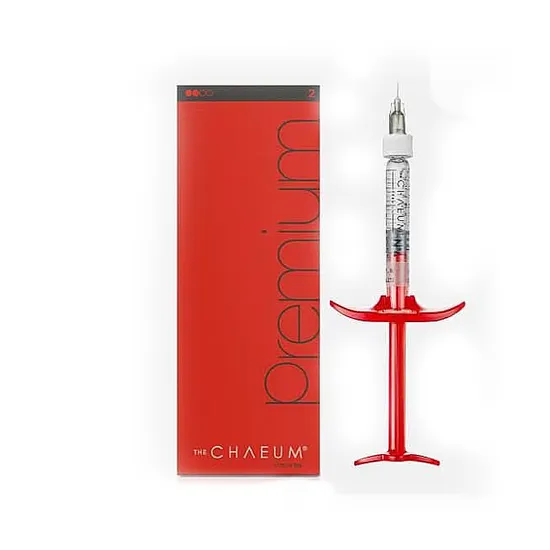
Role of Hyaluronic Acid
In fact, a 70 kg (154 lb) person has approximately 15 grams of HA present in their skin, joints, and connective tissues at any given time. However, its natural concentration plummets with age—we lose about 1.5% of our dermal HA per year starting in our mid-20s, contributing directly to volume loss, dryness, and the formation of wrinkles. Dermal fillers like Chaeum harness the incredible water-binding capacity of HA, with one single gram of the substance capable of holding up to 6 liters of water. This isn’t just a theoretical number; in clinical formulations, this translates to a hydrating boost that can increase skin moisture by over 95% within the first 24 hours post-injection, providing immediate and visible plumping.
Because it is a biocompatible sugar polymer, the risk of allergic reaction is extremely low, estimated at less than 0.1%. The HA used isn’t raw; it’s engineered through a process called cross-linking. This stabilizes the otherwise short-lived molecule—natural HA in the skin has a half-life of only about 24 hours. Cross-linking creates a robust, three-dimensional network that slows degradation by the body’s natural enzyme, hyaluronidase, extending its duration from mere hours to an average of 6 to 12 months, depending on the injection site and the individual’s metabolic rate. Areas with higher muscle movement, like the lips, may break down the filler faster, typically around the 6-month mark, while less dynamic areas like the cheeks can show results for 12 months or longer.
The key to a natural result lies in the viscosity (G’) and elasticity of the cross-linked HA gel. These physical properties, measured in Pascals (Pa), determine how the filler will behave under the skin. A firmer gel with a high G’ (above 500 Pa) is ideal for providing structural support and lifting cheeks or defining jawlines, as it can withstand compressive forces without shifting. Softer, more malleable gels with a lower G’ (around 200 Pa) are designed for smoothing fine lines or lip enhancement, allowing for natural movement and expression.
Furthermore, some studies suggest that the presence of this temporary HA matrix can stimulate a mild, beneficial neocollagenesis process—where the body is prompted to produce new collagen at a gradual rate. This means that even after the filler itself has been metabolized (at a rate of approximately 0.5% per day), there can be some residual improvement in skin texture and density, making it more than just a temporary volumetric solution.
Added Lidocaine for Comfort
Over 90% of modern HA fillers now come pre-mixed with this local anesthetic, a response to data showing that pain reduction during injection is a top priority for 78% of patients considering cosmetic procedures. Lidocaine hydrochloride, typically at a concentration of 0.3%, is uniformly integrated into the gel matrix. This specific concentration is calibrated to block nerve signals almost instantly, reducing discomfort by an average of 60-70% on standardized pain scales (e.g., VAS scores dropping from ~5/10 to ~2/10) without compromising the filler’s viscosity or longevity. For practitioners, this means treatments can often be completed 20-30% faster because patients remain more still and relaxed, enhancing injection precision.
| Parameter | Specification | Functional Impact |
|---|---|---|
| Lidocaine Concentration | 0.3% w/w | Provides effective nerve blocking without affecting HA gel structure |
| Onset Time | 30-45 seconds | Rapid numbing effect initiates before injection is complete |
| Duration of Effect | 45-60 minutes | Covers the entire procedure and initial recovery phase |
| pH Level | Adjusted to 6.8-7.2 | Maintains compatibility with tissue and minimizes injection site reaction risk |
The formulation challenge was to ensure the lidocaine didn’t alter the physical properties of the cross-linked HA. Through precise buffering, manufacturers maintain the product’s pH within a narrow range of 6.8 to 7.2, which is crucial for both comfort and stability.A pH deviation of more than 0.3 outside this range can significantly increase the sensation of stinging or burning upon injection.
The anesthetic effect begins within 30-45 seconds of the injection starting and lasts for approximately 45-60 minutes—more than enough time to complete even a complex, multi-site treatment session. From a safety profile perspective, the amount of lidocaine delivered in a typical 1 mL syringe (3 mg) is well below the maximum recommended dose of 4.5 mg/kg, making it extremely safe for nearly all patients. Allergic reactions to lidocaine are exceptionally rare, occurring in less than 0.1% of the population.
Other Supporting Ingredients
These components, often making up less than 5% of the total formula by weight, are far from incidental. They are critical for maintaining the product’s sterility, pH balance, and osmolarity—factors that directly influence both comfort during injection and the longevity of the result. A deviation of just 0.5 in pH can cause significant stinging, while an incorrect salt concentration can lead to tissue irritation or even accelerated breakdown of the HA gel.
| Ingredient Type | Typical Concentration | Primary Function |
|---|---|---|
| Buffer Agents | Phosphate salts, ~0.05M | Maintain pH at 7.2-7.4 to match tissue fluid and minimize irritation |
| Osmotic Adjusters | Sodium chloride, ~0.9% | Achieve isotonicity (~290 mOsm/kg) to prevent cell damage or fluid shift |
| Antioxidants | <0.01% (e.g., EDTA) | Chelate metal ions to prevent oxidative degradation during storage |
| Water for Injection | QS to 100% | Sterile solvent making up approximately 75-80% of the gel volume |
The most critical of these are the buffering agents, usually a phosphate system like disodium hydrogen phosphate and sodium dihydrogen phosphate. This combination maintains the pH within a tight range of 7.2 to 7.4, which is physiologically identical to human tissue fluid. This is vital because a pH lower than 7.0 can cause a stinging sensation upon injection due to mild acidity, while a pH higher than 7.8 might feel uncomfortably alkaline. The osmolarity is adjusted to approximately 290 mOsm/kg (milliosmoles per kilogram) using sodium chloride, making the solution isotonic.
This means it has the same salt concentration as your body’s cells; a difference of more than 10% could cause water to either rush into or out of cells at the injection site, leading to temporary swelling, discomfort, or even localized tissue damage. To ensure long-term shelf stability—which is typically 24 months at controlled room temperature (20-25°C)—a minuscule amount (less than 0.01%) of a chelating agent like EDTA (Edetate Disodium) is added.
Safety and Testing Standards
This classification mandates an average of 12 to 18 months of preclinical testing and a further 24 months of clinical follow-up on hundreds of patients before a product ever reaches the market. For a single batch of filler, over 50 distinct quality control checks are performed, testing for everything from sterility and endotoxin levels to rheological properties and syringe functionality. The acceptance criteria are incredibly tight; for example, the allowable endotoxin limit is set at a maximum of 0.5 EU/mL (Endotoxin Units per milliliter), a threshold designed to eliminate any risk of inflammatory reaction upon injection.
Every gram of hyaluronic acid is sourced with a Certificate of Analysis (CoA) verifying its purity, which must be ≥98.5%, with the remaining 1.5% consisting only of trace salts and water. The cross-linking agent BDDE is heavily purified to ensure its residual concentration in the final product is less than 2 parts per million (ppm), a level proven to be non-irritating and non-carcinogenic.
After synthesis, the gel undergoes extensive in-vitro and in-vivo testing. This includes using a rheometer to confirm its elastic modulus (G’) falls within a predefined range, say 250-450 Pa, ensuring it has the correct firmness for its intended use. Accelerated aging studies are conducted where the product is stored at 40°C and 75% relative humidity for 90 days to simulate 24 months of shelf life, with samples tested weekly for any changes in viscosity, pH, or clarity.
Furthermore, each batch is tested for sterility using USP <71> methods, where samples are immersed in soybean-casein digest broth for 14 days at 30-35°C to detect any microbial growth; a single positive test results in the entire batch being rejected. This immense investment in quality control—which can add 15-20% to the total production cost—is why major brands can boast an exceptionally low adverse event rate of less than 0.1% for reactions beyond minor, predictable swelling or bruising that typically resolves within 7-14 days. This relentless focus on data-driven standards provides the foundation for clinician and patient confidence.
Comparing Filler Types
The global HA filler market offers over 20 major brands, each engineered with distinct rheological properties (like elasticity and viscosity) to address specific aesthetic concerns. For instance, fillers designed for cheek augmentation typically possess a high elastic modulus (G’) above 500 Pa, enabling them to provide structural lift and resist deformation under facial pressure. In contrast, fillers for lip enhancement have a lower G’, around 200 Pa, allowing for softness and natural movement. The concentration of HA can vary from 15 mg/mL to 25 mg/mL, and the degree of cross-linking ranges from 3% to 8%, directly influencing how long the product lasts—anywhere from 6 months for superficial lines to 18 months for deep volume restoration.
Elastic Modulus (G’): Think of this as the filler’s firmness or its ability to resist pressure and hold its shape. A high G’ filler (>500 Pa, e.g., Juvederm Voluma, Restylane Lyft) is a volume maestro, ideal for lifting cheeks and defining the jawline. A low G’ filler (<300 Pa, e.g., Restylane Refyne, Juvederm Ultra XC) is a flexibility expert, perfect for smoothing smile lines and adding soft volume to lips.
Particle Size and Consistency: Fillers are either monophasic (a single, smooth gel) or biphasic (a suspension of calibrated particles in a gel carrier). Monophasic gels (e.g., Juvederm family) tend to integrate smoothly, making them excellent for broader areas and subtle blending. Biphasic gels (e.g., Restylane family) often provide more projection and are frequently chosen for defining lips or sharpening the border of a jawline.
HA Concentration and Cross-Linking Density: A higher HA concentration (e.g., 23-25 mg/mL) coupled with a greater cross-linking percentage (e.g., 6-8%) generally translates to a longer duration. These products are designed for deep implantation and can last up to 18 months. Less cross-linked, lower-concentration gels are metabolized faster, typically within 6-9 months, and are suited for more superficial, delicate work.
Cost and Value: The price per syringe can vary widely, from 500to1,200, influenced by brand, geographic market, and clinic overhead. While a cheaper product might seem attractive, its lower longevity could mean more frequent touch-ups, potentially costing more over a 24-month period compared to a premium product that requires fewer maintenance sessions.
Recommended Products








